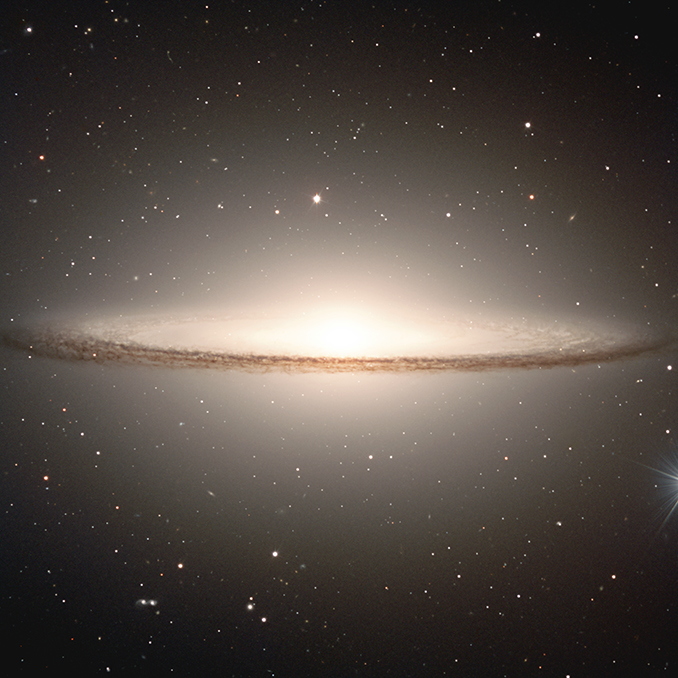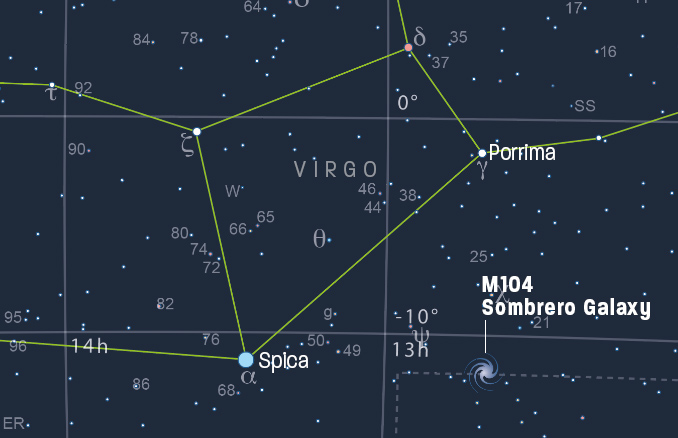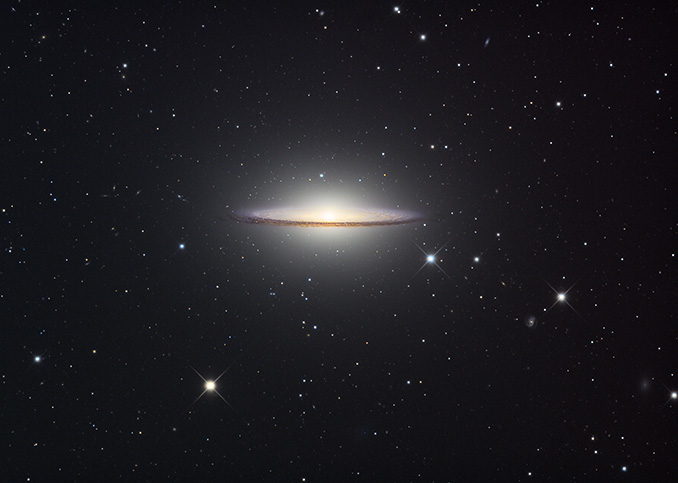
If you were to take a poll of the top galaxies that amateur astronomers can observe and image, I bet you wouldn’t need to look far to see the name of the magnificent and striking Sombrero Galaxy (Messier 104 in Virgo). Simply put, the Sombrero is one of the most stunning galaxy of all and is compulsory viewing for all deep-sky observers.
Present-day amateur images are capable of showing its majestic, broad dust lane, which bisects the entirety of its slightly inclined disc, and its huge central bulge and halo, all which are reminiscent of the rim and high top of a Mexican hat, reinforcing M104’s apt nickname. Every deep-sky object its seems has to have a nickname nowadays, but few are more apt than the Sombrero. M104 (NGC 4594) can be tracked down through a pair of 10 x 50 binoculars or a small telescope, with the remarkable dust lane showing up through a 150mm (six-inch) ’scope.
Messier 104 was discovered by Pierre Méchain in May 1781, too late to be entered into Messier’s original catalogue. However, in 1921 French astronomy writer Camille Flammarion found Messier’s original hand-written note about his independent observation of the Sombrero and M104 came to be. The indefatigable William Herschel observed M104 (of course!) and saw the dark lane, later described in 1833 as a ‘dark interval or stratum‘ by his son John Herschel.

How to observe
The bowl of Virgo straddles the southern meridian at about 11pm BST in late April. Porrima (gamma [γ] Virginis, magnitude +2.9), a famous double star, anchors the base of the bowl, with Spica (alpha [α] Virginis, magnitude +1.0) just under 15° to the south-east. Unfortunately for observers at mid-northern latitudes, including those of us living in the UK, M104 lies in Virgo’s more southerly reaches (at the same declination as Spica, –11°), very close to the boundary with Corvus, to the south. M104 lies about 10° due west of Spica and due south of Porrima.
Despite its less than ideal positioning from UK shores, it still achieves a reasonable peak altitude of 27° at around 11.30pm BST from London, and it remains above 20° altitude for two hours either side of culmination.
The Sombrero is visible through telescopes in the 60–80mm (~2.5 to 3-inch) class as a roughly four-arcminute-long streak, or slither of concentrated light. Increasing magnification can reveal the bright nucleus. Upgrading to a 150–200mm (six- to eight-inch) aperture and ramping up the power on a fine night should reveal the Sombrero’s trademark central bulge and overall nebulous halo, and hint at the marvellous dust lane.
M104 lies at a distance of about 31 million light years, a distance seemly too close for it to be a member of the Virgo Cluster. However, even this late in the day, its membership is still uncertain.

